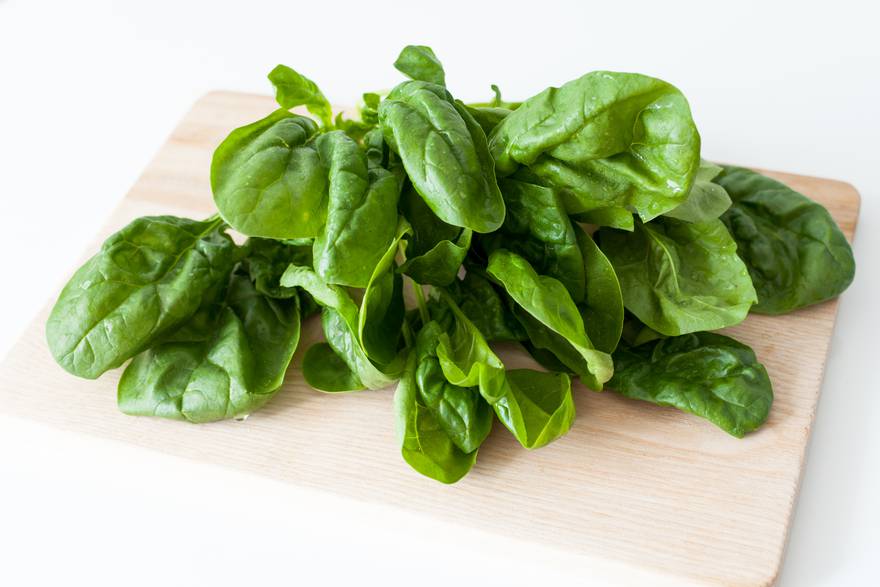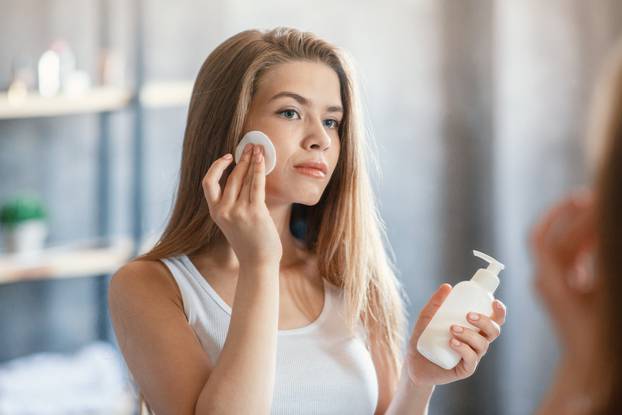Super tips: Here’s how to prepare your skin for summer heat

During the hot summer months, when the skin is especially exposed to the sun, wind and dehydration, intake and application of vitamins such as A, C, E and D play a key role in maintaining its health. Not only do these vitamins help in regeneration and skin protection from free radicals, but also to promote collagen production, accelerate healing and relieve the damage caused by UV radiation.
With regular and balanced care inside and out, your skin can shine with a full glow and keep a youthful, healthy look throughout the summer season. Find out below what vitamins can help with this.
View the video:
00:50
Anti Age diet: For ironing wrinkles eat nuts and spinach
Vitamin C: ally of glossy, youthful skin
Vitamin C, one of the most powerful antioxidants in skin care. Its main role is to neutralize the harmful effects of free radicals that occur due to exposure to UV radiation, pollution and other environmental stressors. In addition to protecting the skin cells, Vitamin C promotes collagen synthesis – a key protein deserving of strength, elasticity and tightening of the skin.
Regular intake of this vitamin, either through nutrition or dermal administration, can significantly contribute to a more uniform complexion, reducing hyperpigmentation stains, alleviation of fine lines and faster healing of minor damage, such as acne and scratches. In addition, Vitamin C can also help strengthen the skin’s natural barriers, making it more resistant to external aggressors.
In warmer months, when the skin is more exposed to the sun, Vitamin C becomes even more important. It acts preventively against dark spots and discolorations caused by UV rays, while also promoting skin renewal after sunbathing. She also strengthens the natural defense mechanism of the skin, helping her keep youthful and natural glow even under high temperatures.
Where to find it?
Vitamin C abounds in fresh fruits and vegetables – especially in citrus fruits such as orange, lemon and grapefruit, berries (strawberries, blueberries, raspberries), red peppers, kiwi, broccoli, kale and spinach. For an extra dose, you can also include it in a serum or cream in your beauty routine.
Vitamin E: keeper of hydration and gentle shield of your skin
Vitamin E, also known as tocoferol, is one of the most important allies of your skin, especially during the summer. This powerful antioxidant helps to neutralize free radicals that occur due to excessive UV radiation exposure, thus protecting skin cells from damage and premature aging.
But his role not only ends on protection – Vitamin E is also known for his exceptional moisturizing properties.
It helps to maintain the natural humidity of the skin, preventing it from drying out, and at the same time acts soothing on irritated or sensitive skin, reducing redness and inflammatory processes. It is especially effective in combination with Vitamin C – together they make a strong duo that not only protects but also restores the skin exposed to the sun and external influences.
After a day spent in the sun, the skin is often drained and sensitive. Just then Vitamin E comes to the fore – it helps to regenerate damaged cells, renew the lipid layer of the skin and retains the much needed moisture. In addition, it can reduce the tightening sensation and relieve the redness caused by the sun’s rays.
For an additional effect, external use through serums, lotions or creams with vitamin E is also recommended, especially after sun exposure. Its mild but effective properties make it an indispensable part of the summer skin care – inside and out.
Where to find it?
Vitamin E is found in many delicious and nutrients. The richest sources include nuts (such as almonds, hazelnuts and walnuts), seeds (especially sunflower), avocado, dark -shaped vegetables such as spinach and chard and cold -pressed vegetable oils – especially sunflower, olive and wheat cheese oil.
Vitamin A (Beta-carotene): For the renewal and elasticity of the skin
Vitamin A (often as a beta-carotene, which the body turns into an active shape) is crucial to renewing skin cells. It stimulates the creation of new, healthy cells, which contributes to the smooth texture, reduction of fine lines, even complexion and maintaining elasticity. Prepares the skin for sun exposure and can contribute to achieving a more beautiful, long -term tanned complexion. However, it is important to remember that Vitamin A does not replace the need for cream with a protective factor!
Where to find it?
You will recognize foods rich in beta-carotene by their vibrant orange and green: carrots, batat, spinach, kale, pumpkin, melon and apricot.
Vitamin D: The Sun’s ally for healthy and balanced skin
Vitamin D, often referred to as « sun vitamin », plays a key role in maintaining the health of the whole organism, including the skin. In addition to contributing to the proper functioning of the immune system, it is also important to maintain a healthy function of skin cells, its tone and growth and renewal processes. It is especially emphasized by its positive action in certain skin problems such as psoriasis, eczema and acne, where it can help relieve symptoms and reduce inflammatory processes.
Unlike other vitamins, vitamin D can only produce the body with the help of sunlight. When the skin is exposed to UVB rays, the synthesis of this important nutrient begins, which then affects the inside on a number of physiological processes.
Although the sun is crucial to the creation of vitamin D, excessive exposure without proper protection can have serious effects for the skin – including burns, accelerated aging skin and increased risk of skin cancer. That is why it is important to find a balance: it spends a short time in the sun in the morning or evening, and the rest of the day uses a cream with a protective factor (SPF 30 or more), a protective clothing and a hat.
Where to find it?
The most natural source of Vitamin D is the sun – already 10 to 15 minutes of moderate exposure daily (outside the most intense hours, between 11am and 16 h) is enough to encourage its synthesis. In addition, it is also found in certain foods: fatty fish such as salmon, mackerel and tuna, fish oil, egg yolk, mushrooms exposed to UV light and foods enriched with vitamin D, such as some dairy products, vegetable milk and cereals.
Summer is an ideal time to refresh – not just bodies, but also the way you nourish your skin. Heat, sun, sea salt and air conditioning can drain and weaken the leather barrier, so it is important that you give it all the nutrients they need inside and out.










